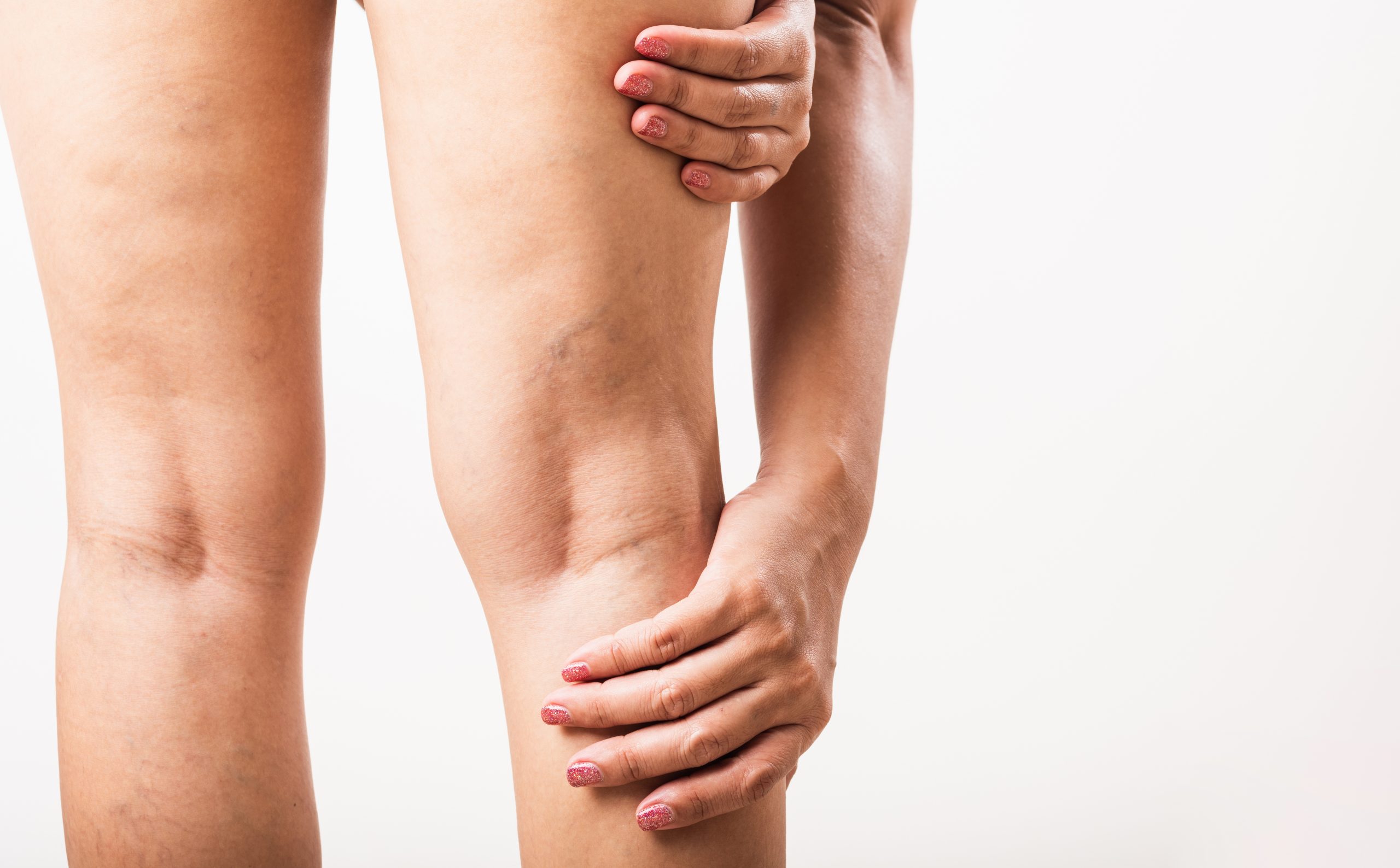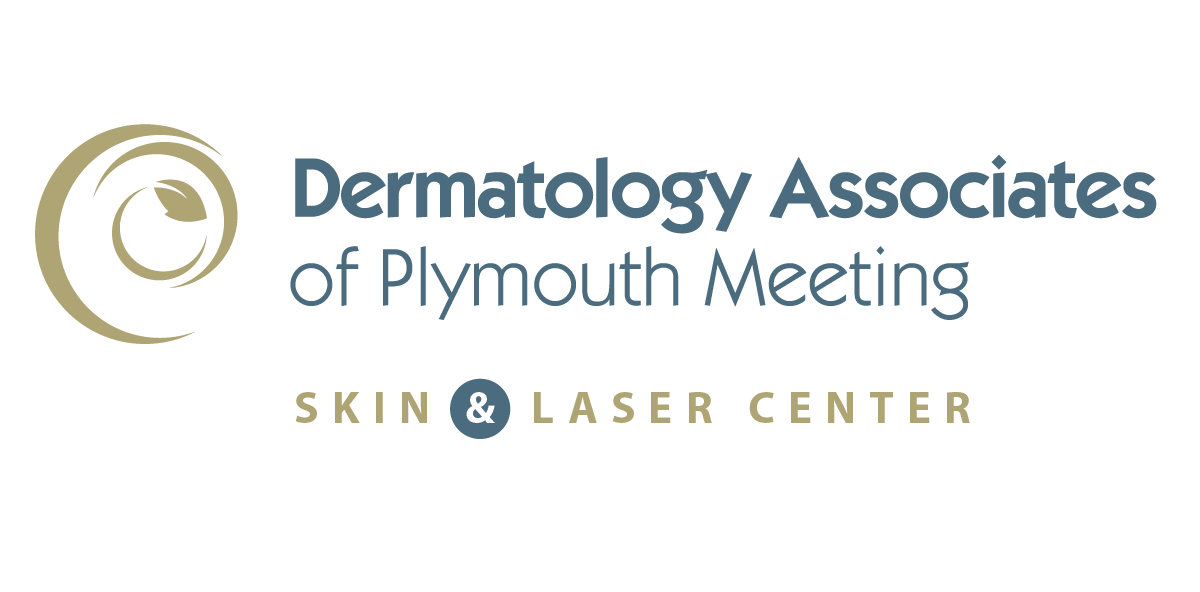Conditions
Varicose and Spider Veins
The presence of highly visible, colorful veins on your body (known as varicose veins) can diminish your self-esteem and sometimes cause irritation or pain. Fortunately, these unsightly veins are treatable. At Dermatology Associates of Plymouth Meeting, we offer patients the best treatment options for reducing and removing spider veins, the mildest form of varicose veins.

What Are Varicose Veins and What Causes Them?
Varicose veins are enlarged, twisted veins that appear red, purple or blue on one’s skin. These web-like veins can show up on any area of the body, but they most frequently appear on legs and feet — the reason for this has to do with how varicose and spider veins form in the first place.
Varicose veins emerge when one’s blood pressure spikes. Thanks to gravity, our lower bodies experience more pressure as we stand and walk throughout the day. This increase in pressure can weaken vein walls and disrupt valve function, causing blood to back up and make veins thicker, heavier and more apparent.
Please note that dermatologists do not treat varicose veins (this is a task for phlebologists, doctors who specialize in vascular conditions). That said, dermatologists can eliminate the appearance of spider veins, primarily via sclerotherapy.
Risk Factors for Varicose Veins
While anyone can wind up with varicose veins, some are more at risk of this condition than others. Common risk factors for varicose veins include:
- Family history
- Age (as you age, the valves in your veins may not work as well)
- Gender (females are more likely to get varicose veins)
- Pregnancy
- Being overweight or obese
- Standing or sitting for long periods of time
- Previous history of blood clots
To discuss your options for varicose veins, call 610-828-0400.
Varicose Veins vs. Spider Veins
Spider veins are a milder subset of varicose veins. As their name implies, spider veins are thinner than varicose veins, and their shape closely resembles spider webs. Spider veins are also closer to the skin’s surface than their larger, thicker varicose counterparts. Because spider veins are small, thin and highly superficial, they don’t typically cause pain. Like varicose veins, spider veins can appear anywhere on the body but tend to show up on legs and feet.
While both venous diseases are sometimes referred to interchangeably, they require different interventions. Removing true varicose veins requires vascular surgery, whereas spider vein treatments are less intensive. Dermatology Associates of Plymouth Meeting is equipped to treat spider veins up to about 1 cm in size.
How To Treat Spider Veins
Dermatology Associates of Plymouth Meeting treats spider veins in two ways, via ClearV™ 1064 laser sclerotherapy or injectable sclerotherapy.
Sclerotherapy (ClearV™ 1064)
ClearV sclerotherapy by SCITON® treats spider veins as well as vascular lesions, rosacea, skin discoloration and broken capillaries using a 1064 nm Nd:YAG laser. This laser sclerotherapy uses LED lights to illuminate unwanted veins for precise treatment and then closes the vessels via 1064nm YAG laser so the body can naturally remove them.
ClearV is a safe and effective spider vein treatment that causes little to no discomfort and requires virtually zero downtime following the procedure.
Injectable Sclerotherapy
Injectable sclerotherapy eliminates spider veins via a chemical solution. A syringe is used to inject the unwanted veins with said solution, causing them to seal up and become absorbed by the body over time. This injection procedure only takes 10-15 minutes, and patients only feel a small pinch when the needle is inserted.
Do Varicose and Spider Veins Go Away on Their Own?
Varicose and spider veins do not heal on their own, and delaying treatment may worsen the condition. To cure varicose or spider veins once and for all, medical treatment is necessary.
Should You Worry About Varicose Veins?
Most varicose veins are primarily a cosmetic concern and don’t cause significant discomfort or pose a serious threat. That said, if left untreated, varicose veins can worsen and hinder one’s quality of life. If you have varicose veins and experience any of the following symptoms, it's time to seek help from a vascular surgeon:
- Severe and continuous pain and swelling in the legs
- Heaviness and/or dull, achy feeling in the legs at the end of the day or after physical activity
- The skin over your veins is sore and irritated
- The aching in your legs is causing irritation at night and disturbing or preventing your sleep
As for unwanted spider veins, Dermatology Associates of Plymouth Meeting is here to help via sclerotherapy treatment options.
How To Relieve Pain From Varicose Veins and Prevent Them from Worsening
Getting treatment for your varicose or spider veins is the best way to relieve discomfort and the only way to get rid of them for good. In the meantime, you can ease your symptoms in several ways, such as:
- Staying hydrated
- Keeping your legs elevated
- Performing leg stretches and other exercises regularly
- Soaking your legs in cold water
- Wearing loose-fitting clothing
- Wearing compression stockings
- Losing weight
- Avoiding standing or sitting for extended periods
To learn more about our treatments for varicose and spider veins or to schedule your consultation at Dermatology Associates of Plymouth Meeting, call us at 610-828-0400.
